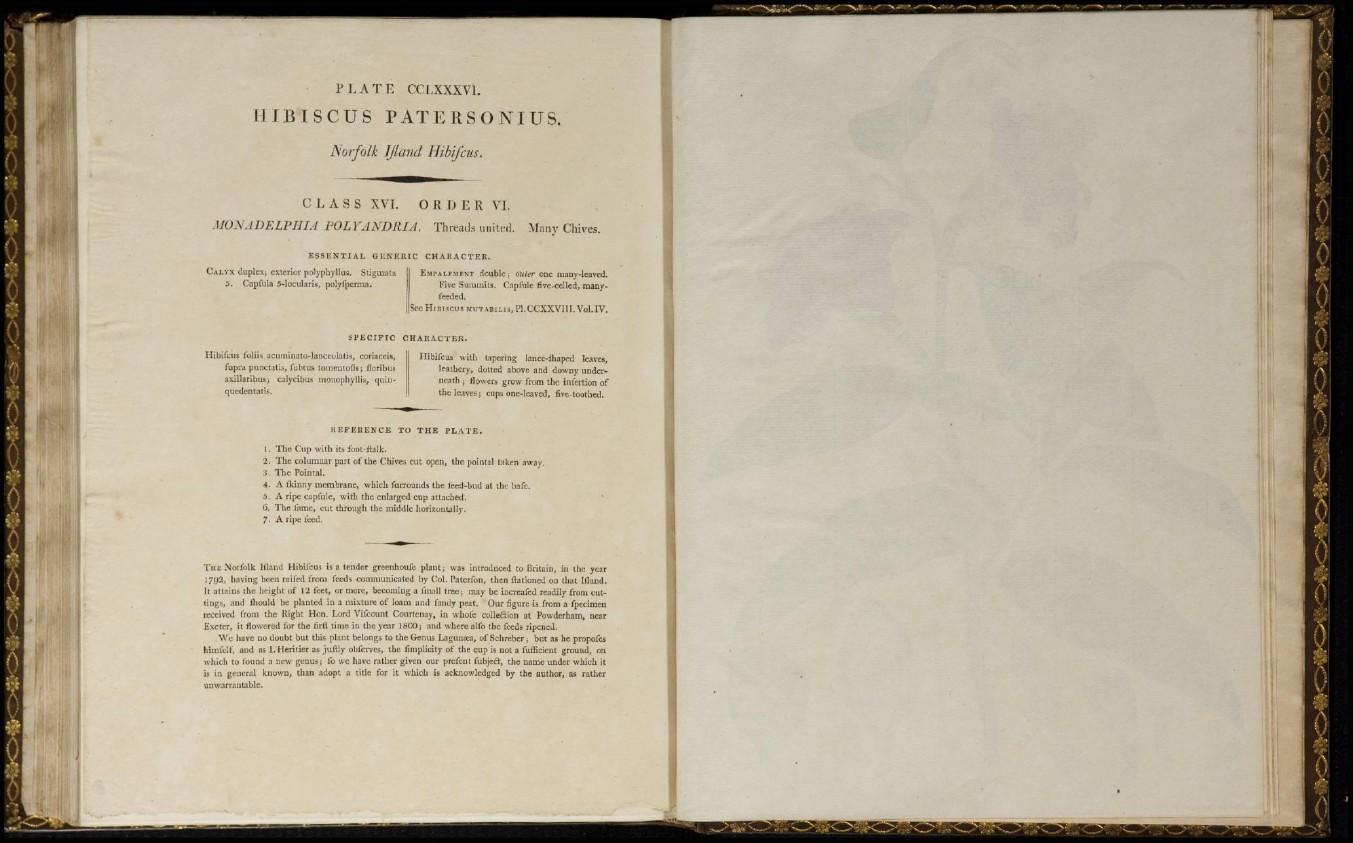
P L A T E CCLXXXV1.
H I B I S C U S P A T E R S O N I U S.
Norfolk Ifland Hibifcus.
C L A S S XVI. ORDER VI.
MONADELPHIA POLY ANURIA. Threads united. Many Chives.
E S S E N T I A L GENERIC CHARACTER.
C A L Y X duplex; exterior polypbyllus, Stigmata
5. Capiula 5-locularis, polyfperma,
E M P A L E M E N T doubie ; outer one many-leaved.
Five Summits. Capiiile rive-celled, manyfeeded.
Sec H I B I S C U S ^ AEiLis, P l . C C X X V I I I . V o l . I V.
S P E C I F I C CHARACTER.
Hibifcus foliis actiminato-lanceolatis,
fupra punctatis, fubtus tomentofis; floribus
a x i l l a r i b u s ; calycibus monophyllis, quinq
u e d e n t a t i s .
Hibifcus with tapering lance-ihaped leaves,
l e a t h e r y , dotted above and downy undern
e a t h ; flowers grow from the infertton of
t h e leaves; cups one-leaved, five-toothed.
R E F E R E N C E TO THE PLATE.
1. T h e C u p w i t h its foot-italk.
2. T h e c o l u m n a r part of t h e Chives cut open, the pointal taken away.
3. T h e Pointal.
4. A ikinny m e m b r a n e , which far-rounds the feed-bud at the bafe.
5. A ripe c a p l u l e , w i t h the enlarged cup attached,
fj. T h e fame, cut t h r o u g h the middle horizontally.
7 - A ripe feed.
T H E Norfolk Ifland Hibifcus is a tender greenhoufe p l a n t ; was introduced to Britain, in t h e year
1 7 9 2 , having been railed from feeds communicated by Col. Paterfon, then ftationed on that Ifland.
I t a t t a i n s the h e i g h t of 1 2 f e e t , or more, becoming a final! t r e e ; may be increafed readily f r om cutt
i n g s , a n d Ihould be planted in a m i x t u r e of l o am and fandy p e a t . Our figure is from a fpecimen
received from the Right Hon. Lord Vifcount Courtenay, in whofe collection at Powderham, near
E x e t e r , it flowered for t h e firft time in the year 1 8 0 0 ; and where alfo t h e feeds ripened.
We have no doubt but this plant belongs to t h e Genus Lagunsea, of S c h r e b e r ; but as he propofes
himfelf, and as L ' H e r i t i e r as j u f t ly obferves, the fimplicity of the c u p is n o t a fuificient ground, on
which to found a n ew g e n u s ; fo we have r a t h e r given our prefent fubject, the n a m e under which it
is in general known, than adopt a title for it which is acknowledged by the author, as rather
u n w a r r a n t a b l e .